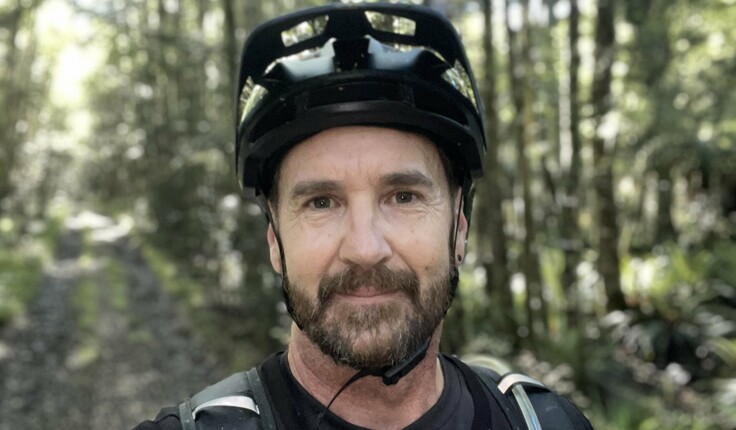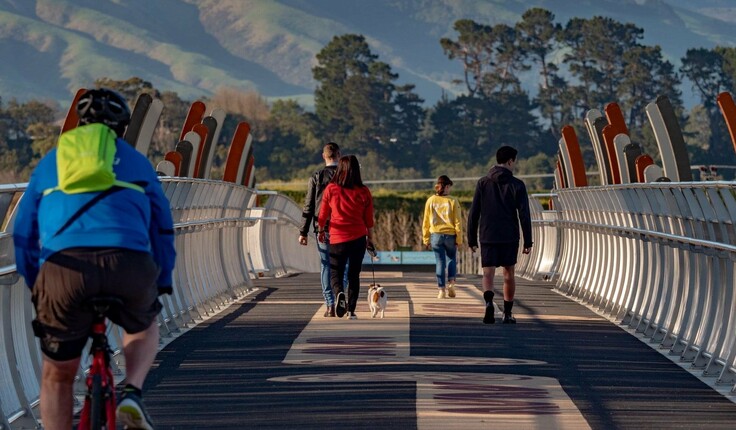News
Being a part of positive change
Posted 15 09 2021
in News

Dave Charnley is the Senior Urban Designer inside Palmerston North City Council’s Strategic Planning Unit. A Lincoln University graduate (1999 - 2002) he’s responsible for championing good urban design outcomes across the city, structure planning, master planning and strategy, and implementation of City Centre and Manawatū River Frameworks.
He also acts as technical advisor on catalyst council projects and oversees the delivery of Creative City Conversations programme. Charnley is the current chair of the NZILA’s Hawkes Bay Manawatū branch.
LAA: What does landscape architecture mean to you?
DC: To me, landscape architecture is a vehicle by which humanity can respectfully build better, more meaningful and enduring relationships with the whenua.
LAA: Why did you choose the profession?
DC: To be honest, when I look back on my journey to becoming a landscape architect I actually feel like landscape architecture kind of chose me. I had studied horticulture, art and design all the way through high school but at the time didn’t understand how these skills could marry to become a legitimate career pathway. I then did further study in commercial horticulture at polytech and it was here that I first became aware of landscape architecture.
I remember a small poster on the class notice board promoting the programme at Lincoln. It was that poster that really stuck with me. I then spent another few years working in arboriculture and landscape construction here and overseas. Finally the penny dropped and I realised that Landscape Architecture was what l really wanted to do and could be good at; and so on my return home from overseas I enrolled at Lincoln.
LAA: You work for Palmerston North City Council - why is it important for councils to have landscape architects on staff?
DC: Landscape architects carry a unique skill set that can assist local government to better physically deliver on their strategic direction especially in the design of spaces that seek to reconcile or enhance relationships between people and place. Given the increased central government direction on well-beings, obligations of treaty led partnership, intensification and housing affordability, councils now have a greater responsibility for co-governance of places between councils and mana whenua, community engagement and co-design and ensuring good urban design outcomes.
This now requires a wider, multi-disciplinary approach to council strategic direction setting and on the ground project delivery, therefore landscape architects and urban designers should be constantly at this table.

From what I have observed landscape architects are leaders in this space and have the ability to greatly contribute and influence positive change through design thinking. As a designer it is challenging operating within a political context but also hugely rewarding to be part of positive change for your community. I applaud all councils who currently employ landscape architects and urban designers within their organisation and encourage others who don’t to seriously rethink the future focused skills they need within their organisational structure.
LAA: Done well LA takes a lot of mental energy and creativity. What's the first thing you do when starting a new project?
DC: A large proportion of my role as Senior Urban Designer is advisory and consists of challenging current thinking and championing good design outcomes which I am aware is a privileged position to be in. I wouldn’t necessarily consider that I get to have clear stop and start points between projects due to the numerous public and private projects I am involved in on any given day.
My role requires me to have to consistently pivot a lot and jump in and out of varying contexts, scales and timelines and I can tell you consistently doing this is extremely draining on energy and creativity! I do try to get out of the office and amongst the life of the city on a regular basis as this to me is my ‘real’ office. It is nourishment for me and it allows me to better understand the place and people through the experiences and interactions I have when doing this.
I guess the one thing I always come back to and talk a lot about is the value of creative design thinking and trust of the design process - something not given enough value and importance to in the planning and delivery of many public projects. Projects need to be outcomes focused and so the question on any project should be “what is the problem we are trying to solve?”
Design thinking is creative problem solving so what I have learnt over time about creativity is to be comfortable within creative chaos, be prepared to explore it’s edges as it is here where the new solutions exist, and be patient to let the solutions emerge rather than be forced and be prepared to explore it’s edges as it is here where the new solutions exist.
LAA: What fires your passion around work?
DC: I feel I have a vested interest and real sense of purpose in leading out positive change for Palmy that’s more than just professional. I’m not a native of the city, but my wife is and we have chosen to raise our children here. Palmy generally gets a bad wrap from outsiders and I acknowledge we haven’t historically been proactive in changing hearts and minds on this. But that has certainly changed over that last few years. There is a real energy to the change occurring and it feels like Palmy is starting to grow into itself as a city and less as a town.
Many visitors are pleasantly surprised by what our city does offer and a lot of credit goes to the passion of the brilliant minds of those I get to work alongside who have chosen to invest in the city for this. I am very proud of the work we are doing here around placemaking, the return work back towards our beautiful and dynamic Manawatū River and the increasing expression of Rangitāne identity within our city form.
LAA: And what would we find you doing when you're not at work?
DC: When I down tools as an urban designer, you can find me hanging out with family and friends, indulging in my passion for refining my skills in brewing craft beer, watching test cricket, trout fishing – yes right here in the city or mountain biking our many trails and awesome Arapuke Mountain Bike Park.
Share
19 Dec
Christmas break 2025

see you from 12 January
As we wrap up another big year, we’re taking a moment to pause, breathe, and enjoy a well-earned break. Meri …
18 Dec
President’s update

December 2025
Earlier this month I attended the Ngā Aho Māori Design Professionals Wānanga-ā-Tau at Te Aranga Marae in Flaxmere. Tuia Pito …
18 Dec
Awards 2026 update

An update as we warm up for the 2026 Awards kaupapa. Submissions will open in March and will run for …
Events calendar
Full 2026 calendar